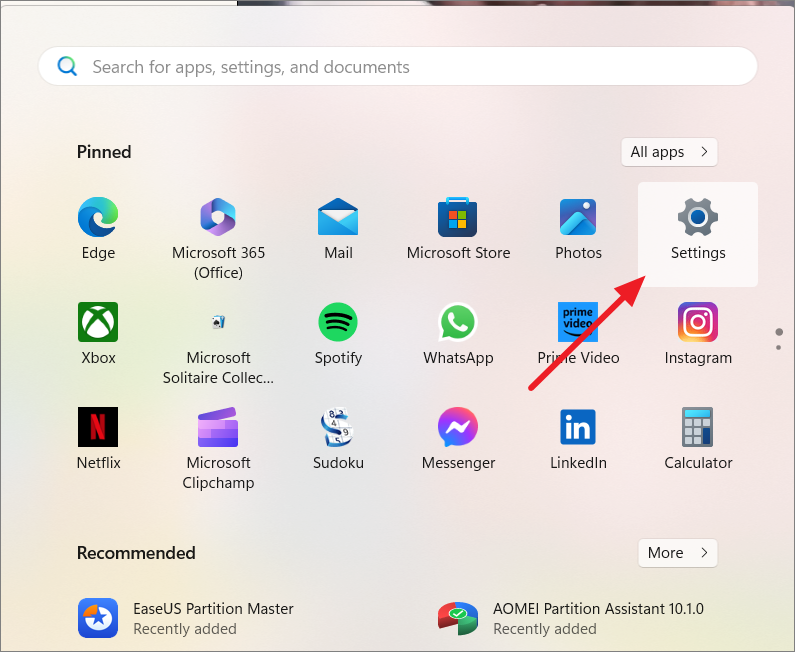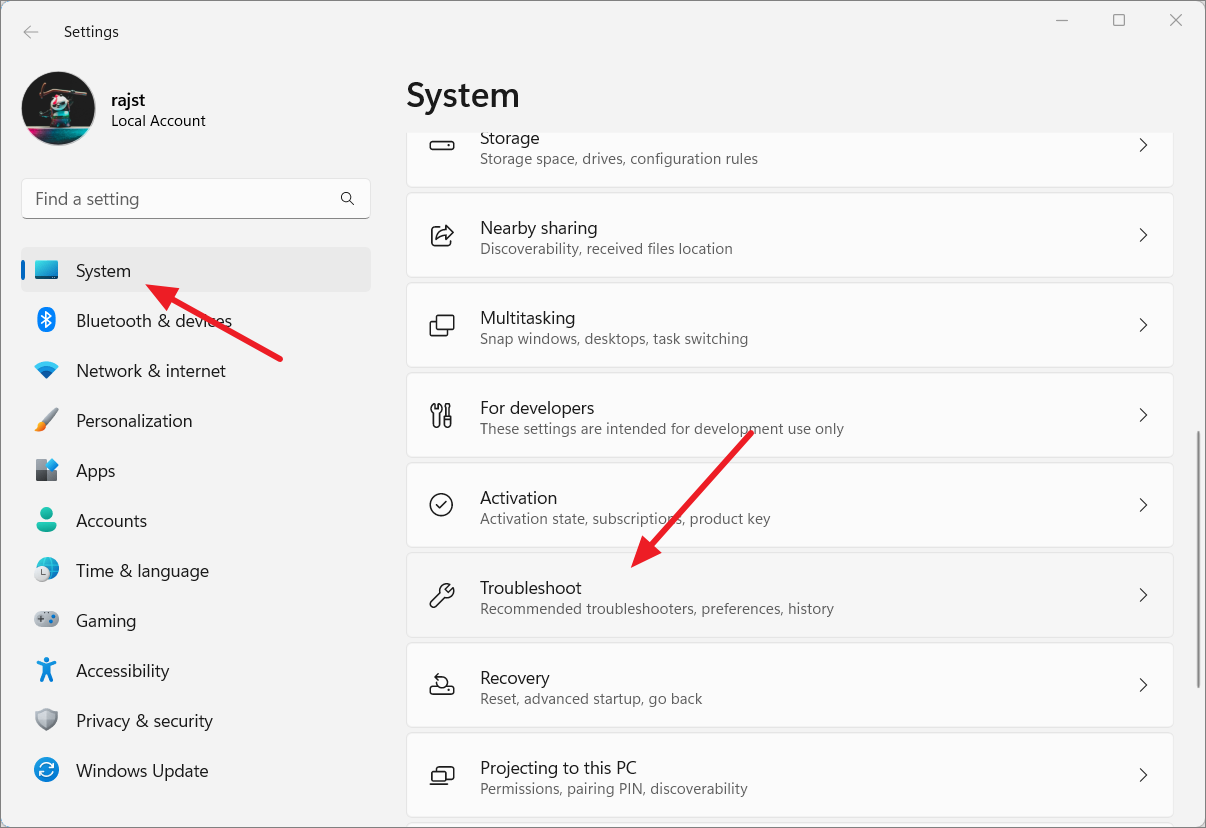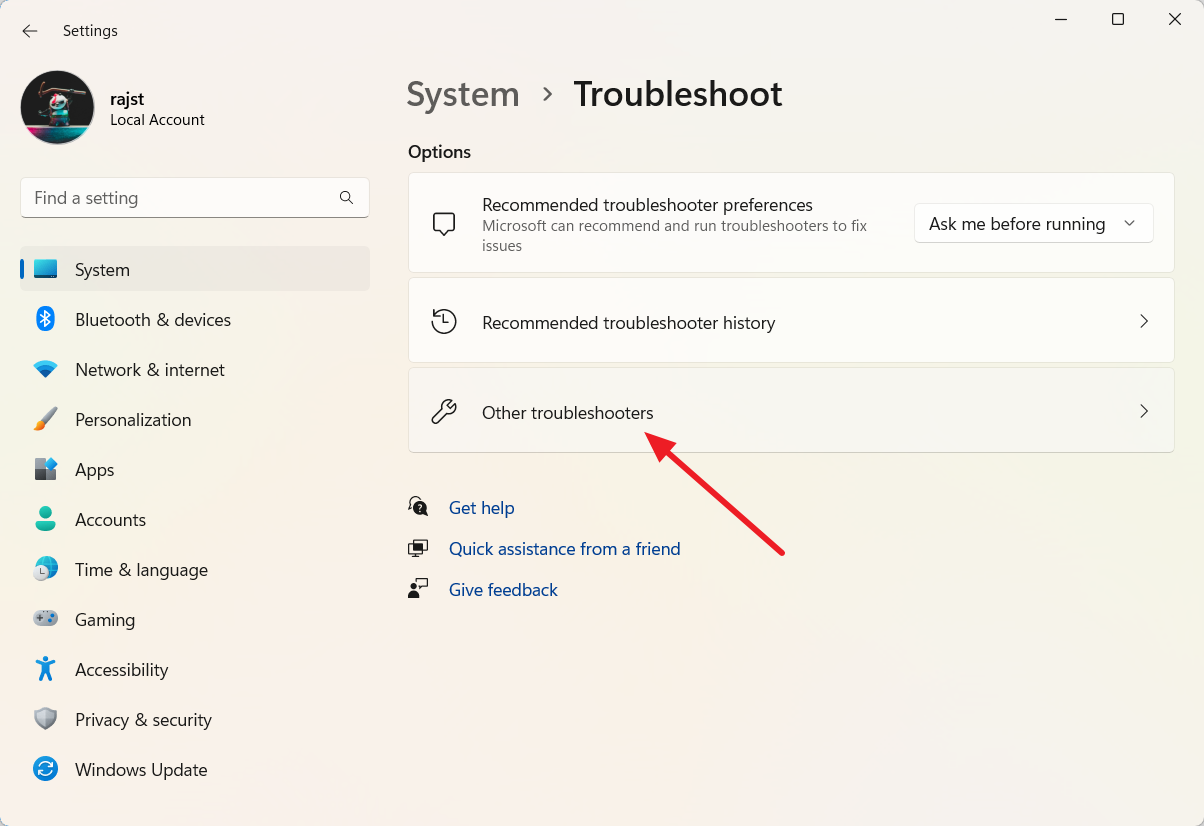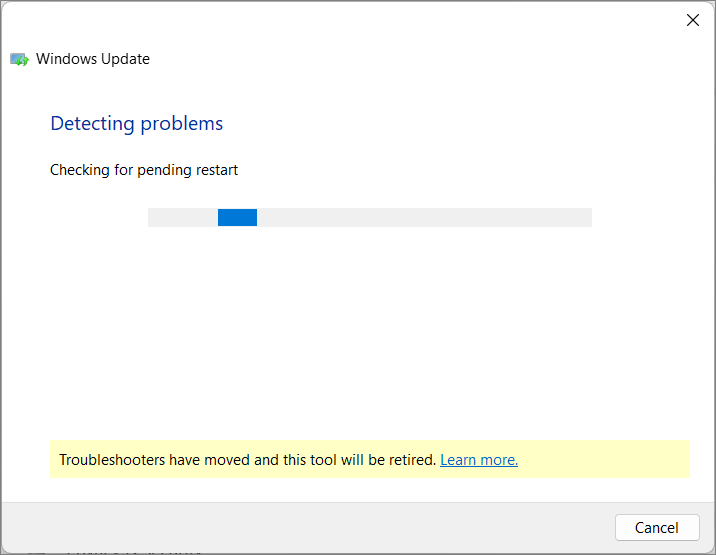If you're encountering the Windows 11 Update Error 0x800b0109 along with the message 'Some Update Files Aren’t Signed Correctly', you're not alone. This error indicates issues with the digital signatures of certain update files, causing Windows to halt the update process. Thankfully, there are several solutions to address this problem and get your system updated properly.
Reset Windows Update Components and Policies
Resetting the Windows Update components can often resolve issues related to corrupt or misconfigured update files. This method involves stopping essential services, renaming problematic folders, and re-registering crucial system files.
Step 1: Open the Command Prompt with administrative privileges. Type cmd in the Windows search bar, right-click on 'Command Prompt', and select 'Run as administrator'.
Step 2: In the Command Prompt window, stop the BITS, Windows Update, Application Identity, and Cryptographic services by entering the following commands one by one, pressing Enter after each:
net stop bits
net stop wuauserv
net stop appidsvc
net stop cryptsvcStep 3: Delete any unnecessary files created by BITS by executing:
Del "%ALLUSERSPROFILE%\Application Data\Microsoft\Network\Downloader\*.*"Press Y when prompted to confirm the deletion.
Step 4: Rename the SoftwareDistribution and Catroot2 folders, which store temporary update files, using the following commands:
Ren %Systemroot%\SoftwareDistribution SoftwareDistribution.bak
Ren %Systemroot%\System32\catroot2 catroot2.bakStep 5: Reset the BITS and Windows Update services to their default security descriptors by entering:
sc.exe sdset bits D:(A;;CCLCSWRPWPDTLOCRRC;;;SY)(A;;CCDCLCSWRPWPDTLOCRSDRCWDWO;;;BA)(A;;
CCLCSWLOCRRC;;;AU)(A;;CCLCSWRPWPDTLOCRRC;;;PU)
sc.exe sdset wuauserv D:(A;;CCLCSWRPWPDTLOCRRC;;;SY)(A;;
CCDCLCSWRPWPDTLOCRSDRCWDWO;;;BA)(A;;CCLCSWLOCRRC;;;AU)
(A;;CCLCSWRPWPDTLOCRRC;;;PU)Step 6: Navigate to the System32 directory by typing:
cd /d %windir%\system32Step 7: Re-register the BITS files and Windows Update files. Execute each of the following commands individually:
regsvr32.exe /s atl.dll
regsvr32.exe /s urlmon.dll
regsvr32.exe /s mshtml.dll
regsvr32.exe /s shdocvw.dll
regsvr32.exe /s browseui.dll
regsvr32.exe /s jscript.dll
regsvr32.exe /s vbscript.dll
regsvr32.exe /s scrrun.dll
regsvr32.exe /s msxml.dll
regsvr32.exe /s msxml3.dll
regsvr32.exe /s msxml6.dll
regsvr32.exe /s actxprxy.dll
regsvr32.exe /s softpub.dll
regsvr32.exe /s wintrust.dll
regsvr32.exe /s dssenh.dll
regsvr32.exe /s rsaenh.dll
regsvr32.exe /s gpkcsp.dll
regsvr32.exe /s sccbase.dll
regsvr32.exe /s slbcsp.dll
regsvr32.exe /s cryptdlg.dll
regsvr32.exe /s oleaut32.dll
regsvr32.exe /s ole32.dll
regsvr32.exe /s shell32.dll
regsvr32.exe /s initpki.dll
regsvr32.exe /s wuapi.dll
regsvr32.exe /s wuaueng.dll
regsvr32.exe /s wuaueng1.dll
regsvr32.exe /s wucltui.dll
regsvr32.exe /s wups.dll
regsvr32.exe /s wups2.dll
regsvr32.exe /s wuweb.dll
regsvr32.exe /s qmgr.dll
regsvr32.exe /s qmgrprxy.dll
regsvr32.exe /s wucltux.dll
regsvr32.exe /s muweb.dll
regsvr32.exe /s wuwebv.dllStep 8: Reset the network configurations by typing:
netsh winsock reset
netsh winsock reset proxyStep 9: Restart the services you stopped earlier with the following commands:
net start bits
net start wuauserv
net start appidsvc
net start cryptsvcStep 10: Close the Command Prompt and restart your computer to apply the changes. After rebooting, attempt to update Windows again to see if the error persists.
Run DISM and SFC Scans
Corrupted system files can lead to update errors. Running the Deployment Image Servicing and Management (DISM) and System File Checker (SFC) scans can repair these files.
Step 1: Open Command Prompt as an administrator. Search for cmd in the Start menu, right-click on 'Command Prompt', and select 'Run as administrator'.
Step 2: Run the SFC scan by typing:
sfc /scannowThis scan may take some time to complete. Wait for it to finish and repair any corrupted files.
Step 3: After the SFC scan, run the DISM scan to repair the Windows image. Type the following commands one after the other:
Dism /Online /Cleanup-Image /CheckHealth
Dism /Online /Cleanup-Image /ScanHealth
Dism /Online /Cleanup-Image /RestoreHealthThe DISM scan can take several minutes. Once completed, restart your computer and try updating Windows again.
Run the Windows Update Troubleshooter
Windows has a built-in troubleshooter that can automatically detect and fix many update-related issues.
Step 1: Press the Windows key and click on 'Settings'.

Step 2: In the Settings window, select 'Troubleshoot' from the right pane under the 'System' section.

Step 3: Click on 'Other troubleshooters' to view additional troubleshooting tools.

Step 4: Locate 'Windows Update' and click the 'Run' button next to it.

Step 5: Allow the troubleshooter to detect and fix any issues. Once it's done, restart your computer and attempt to update Windows again.

Check the Windows Update and BITS Services
Ensuring that the Windows Update and Background Intelligent Transfer Service (BITS) are running properly is crucial for updates to install correctly.
Step 1: Press Windows + R to open the Run dialog box. Type services.msc and press Enter.
Step 2: In the Services window, scroll down and find 'Windows Update'. Double-click on it to open its properties.

Step 3: Set the 'Startup type' to 'Automatic' and click 'Start' if the service is not running. Click 'Apply' and then 'OK'.

Step 4: Locate 'Background Intelligent Transfer Service' in the list and double-click it.

Step 5: Ensure the 'Startup type' is set to 'Manual' and click 'Apply' and 'OK'.

Step 6: Close the Services window, restart your computer, and try running Windows Update again.
Check Date and Time Settings
Incorrect date and time settings can interfere with the Windows Update process, affecting the verification of digital signatures.
Step 1: Right-click on the clock in the taskbar and select 'Adjust date and time'.

Step 2: In the Settings window, make sure the 'Set time automatically' option is turned on.

Step 3: Select the correct time zone from the 'Time zone' dropdown menu.

Step 4: Restart your computer and check if the Windows Update error is resolved.
Disable Third-Party Antivirus or Firewall
Sometimes, third-party antivirus software or firewall settings can block Windows Update processes. Temporarily disabling them can help identify if they're causing the issue.
Step 1: Locate the antivirus or firewall icon in the system tray at the bottom-right corner of your screen.
Step 2: Right-click the icon and choose the option to disable or pause protection. This option might vary depending on the software you're using.
Step 3: Attempt to run Windows Update again. If the update succeeds, remember to re-enable your antivirus or firewall to keep your system protected.
Remove the Windows Update Registry Entry
Deleting certain registry entries related to Windows Update can resolve update errors. Caution is advised, and it's recommended to back up the registry before making changes.
Step 1: Press Windows + R, type regedit, and press Enter to open the Registry Editor.

Step 2: Navigate to the following path:
HKEY_LOCAL_MACHINE\SOFTWARE\Policies\Microsoft\Windows\WindowsUpdate
Step 3: Right-click on 'WindowsUpdate' and select 'Delete'. Confirm the action when prompted.

Step 4: Close the Registry Editor, restart your computer, and try updating Windows again.
Turn Off Proxy Settings
Proxy settings can interfere with Windows Update by blocking necessary network connections. Disabling them may resolve the update error.
Step 1: Open the Settings app by pressing Windows + I.
Step 2: Click on 'Network & Internet', then select 'Proxy' from the right-hand menu.

Step 3: Under 'Manual proxy setup', click on 'Edit' next to 'Use a proxy server'.

Step 4: Toggle off 'Use a proxy server', then click 'Save'.

Step 5: Close the Settings window and attempt to run Windows Update again.
Perform a Clean Boot
A clean boot starts Windows with a minimal set of drivers and startup programs, which can help eliminate software conflicts that occur during updates.
Step 1: Press Windows + R, type msconfig, and press Enter to open the System Configuration window.

Step 2: In the 'General' tab, select 'Selective startup' and uncheck 'Load startup items'.

Step 3: Go to the 'Services' tab, check 'Hide all Microsoft services', and then click 'Disable all'.

Step 4: Navigate to the 'Startup' tab and click on 'Open Task Manager'.

Step 5: In Task Manager's 'Startup' tab, disable all startup items by right-clicking each one and selecting 'Disable'.

Step 6: Close Task Manager, click 'Apply' and 'OK' in the System Configuration window, and then restart your computer.
Step 7: After the reboot, try running Windows Update. If the update works, it indicates that a background service or startup program was causing the conflict.
Step 8: To return to normal startup, open System Configuration again, select 'Normal startup' in the 'General' tab, click 'Apply', 'OK', and restart your computer.
Manually Download Updates from Microsoft Update Catalog
If automatic updates fail, you can manually download and install updates from the Microsoft Update Catalog.
Step 1: Open a web browser and go to the Microsoft Update Catalog website.
Step 2: In the search box, enter the KB number of the update you wish to install and click 'Search'. If you're unsure of the KB number, you can search for 'Windows 11 updates'.

Step 3: Find the appropriate update from the list and click the 'Download' button next to it.

Step 4: A new window will open with a link to the update file. Click the link to download the update.

Step 5: Once downloaded, run the installer and follow the on-screen instructions to install the update. Restart your computer if prompted.
Perform an In-Place Windows Upgrade
If none of the previous methods work, performing an in-place upgrade reinstalls Windows without deleting your personal files. This can fix deeper system issues causing the update error.
Step 1: Download the latest Windows 11 ISO file or create a Windows 11 Installation Media using the Media Creation Tool.
Step 2: Mount the ISO file by right-clicking it and selecting 'Mount', or insert the installation media. Open the mounted drive and run the setup.exe file.
Step 3: If prompted by User Account Control, click 'Yes'. Accept the license terms by clicking 'Accept'.

Step 4: Choose 'Upgrade this PC now' and click 'Next'. The setup will prepare and check for updates.

Step 5: When prompted to choose what to keep, select 'Keep personal files and apps' to retain your data, and click 'Next'.

Step 6: Click 'Install' to begin the upgrade process. Your computer will restart several times during the installation.

Step 7: Once the upgrade is complete, your system should be updated, and the error should be resolved.
By following these methods, you should be able to fix the Windows 11 Update Error 0x800b0109 and ensure your system stays up-to-date with the latest features and security patches.


